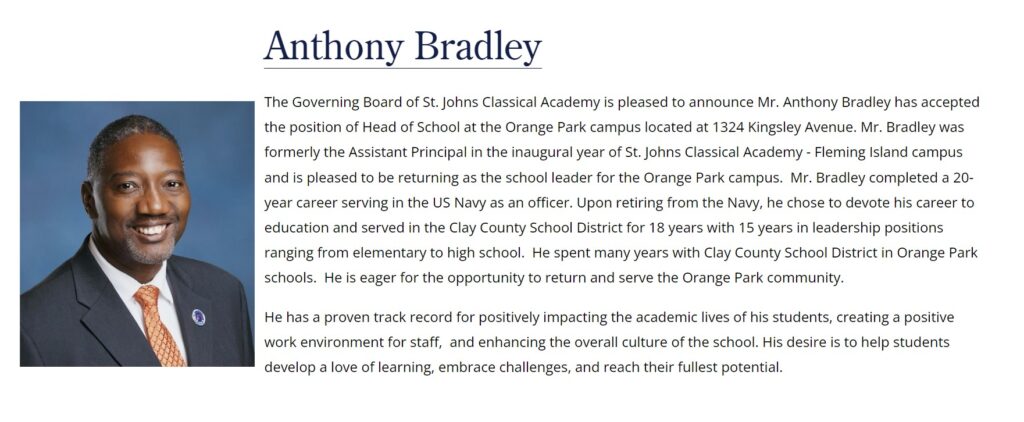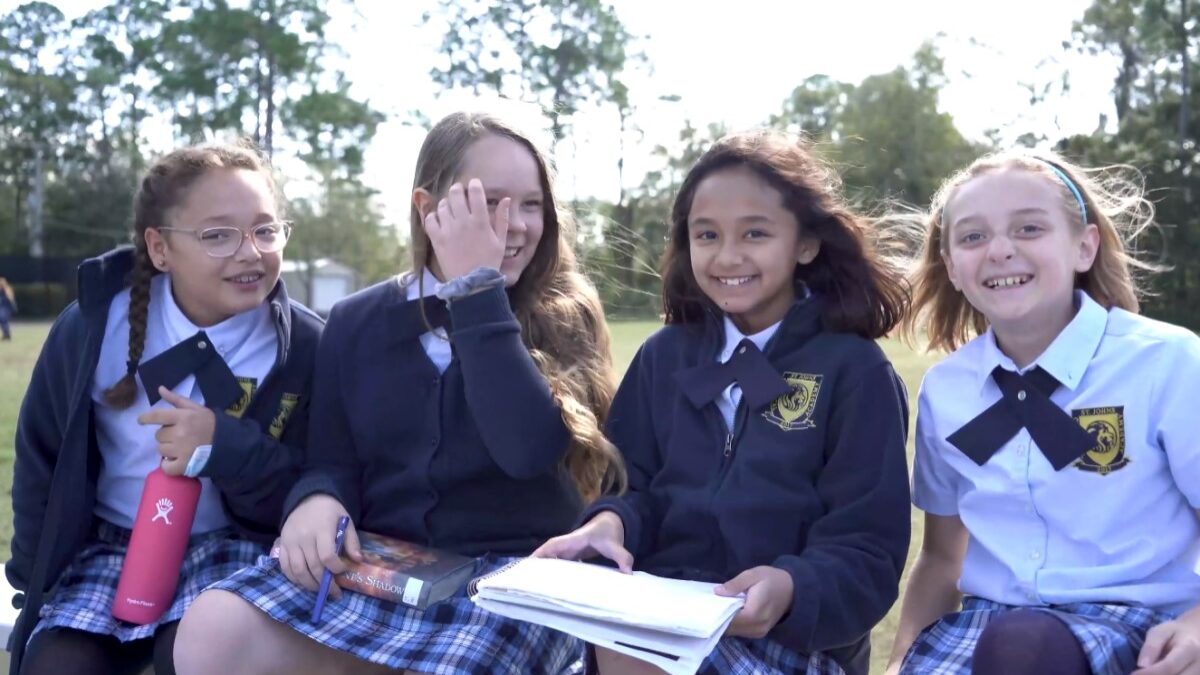Three-decade public-school educator Phillip Schwenk remembers an April day that crystallized for him what an American classical education means. It also epitomized the political climate in which parents are seeking them.
On this spring day in the Toledo, Ohio classical public school he helped start, Schwenk saw a second-grade student and a 73-year-old teacher of different skin colors on stage together. During the daily all-school assembly at Northwest Ohio Classical Academy, the two were reciting the poem “Harriet Tubman,” by African-American poet Eloise Greenfield. Listening were students of every hue and family income.
Schwenk particularly remembers this vignette, he said, because the previous day he had read a New York Times attack on his school’s curriculum. The Times alleged it was racist and so was its publisher, Hillsdale College (this author’s alma mater), for including positive aspects of American history and competing with the Times’ anti-American 1619 Project.
Classical education has been taking a battery of negative fire in recent years, all of it untethered to students and teachers’ daily work. A Washington Post report in June, for example, claimed pictures of the Founding Fathers and the colors red, white, and blue are racist. In May, NBC News attacked a small-town charter school and school board for devoting themselves to virtue and citizenship.
It’s a coordinated smear campaign that reveals the leftists making massive dividends from running public schools are defensive about what they teach kids.
Traditional Versus Progressive Education
Students in classical schools recite timeless poetry and study key historical documents. The students at Hillsdale-affiliated public schools all learn the “Pledge of Allegiance” and “The Star-Spangled Banner.” They learn about slavery’s persistence throughout all cultures and history.
They learn the ideals that have inspired millions of Americans to spend their lives ending slavery, and later racist laws such as Jim Crow and affirmative action: the natural rights elucidated by America’s founders. They learn about the numerous differences between those ideals and reality that persist to this day.
Facts like these don’t always support leftist ideology. That’s a problem for big-media outlets like The New York Times, which have gone all-in on guilting Americans into voting for Democrats. Public schools’ capture by Democrat-benefitting special interests has corrupted their original purpose of promoting “religion, morality, and knowledge” to support “good government and the happiness of mankind.”
Their schools aim to resuscitate this kind of education, says Hillsdale College’s “K-12 Program Guide,” which outlines the curriculum affiliate schools use. It’s due to this kind of mission that they and broadly similar schools are seeing surges in enrollment and school openings.
Families Want What These Schools Offer
Hillsdale’s network scaled up from one model school in Colorado to more than two dozen member schools today, four opening this year, and another dozen slated to open by 2024. The Great Hearts Academies charter school network went from one school in 2003 to 40 today, serving 25,000 students. The Thales Academy network of private classical schools went from one school with 30 students in 2007 to 14 campuses with more than 5,600 students today.
A former principal and history teacher, Schwenk is a vice president for American Classical Education, a nonprofit organization formed to open Hillsdale-model public schools in Tennessee. He told The Federalist that reporters have publicly accused him of racism and lying about his ancestry simply because they don’t like schools that teach apolitical history. He’s the son of a black father and a Dutch mother and identifies as black.
“It’s dishonest and it’s definitely not a kid-centric conversation. Because it’s a better education and it costs less money,” he pointed out. Charter schools typically receive 27 percent less funding than conventional public schools do.
Research demonstrates that all children, especially disadvantaged children, achieve more when taught the way classical schools teach: with systematic phonics, traditional math and science, humanities focused on the greatest works ever written, and a conscious effort at instilling virtue. All children also benefit from school choice, the mechanism that makes charter schools possible. Minority kids especially benefit.
Charter schools are public schools usually run by boards of local parents and business owners or nonprofit organizations. They must accept all applicants, often by lottery if they’re oversubscribed. They have to comply with state testing, safety, and teacher regulations, as well as public records and financial transparency laws.
Their biggest differences with conventional public schools are in governance and enrollment — every child in a charter school is there because her parents chose it, not because of her ZIP code. Charters receive no enrollment if enough parents don’t choose them.
Classical Schools Teach Real, Serious, Exciting Things
Until she became academic dean at St. Johns Classical Academy in Fleming Island, Florida this school year, Angie Casteel taught middle school composition and high school literature and logic there. The charter school also uses Hillsdale’s curriculum.
Casteel’s ninth graders read Homer’s “Odyssey” and the Oedipus cycle of myths from the ancient Mediterranean. Her seniors read Joseph Conrad’s Heart of Darkness, Fyodor Dostoevsky’s Crime and Punishment, William Shakespeare’s “Hamlet,” and the ancient poet Ovid’s “Metamorphoses.”
Most schools wouldn’t give these books to the remedial high schoolers Casteel taught in Texas. At St. Johns, all students read them. Instead of reading excerpts, as the Advanced Placement literature classes she also taught usually assign, St. Johns students read the entire works.
After earning her teaching degree, Casteel taught at traditional schools for eight years, then moved to curriculum development. After her husband’s job moved their family to Florida, she was about to quit education when she found St. Johns.
“I love it — it’s like the best job I’ve ever done,” she told The Federalist. “We have these conversations in the classroom and they spill out into the hallway. … The kids look each other in the face and they talk and they look us in the face and they talk. I don’t remember it being that way when I taught in Texas, and that was really before the phone craze is what it is now.”
St. Johns requires kids to keep their phones stashed in their backpacks, so that helps, but Casteel also thinks it’s the material they study. The kids find it interesting, because it’s about ultimate questions, not just stuffing data into their heads to pass state tests.
“I kept thinking about all those kids back in Texas: I taught them to pass a test, and then they could graduate, and then what? They pass more tests and graduate college, and then what? I thought, ‘What is the purpose of education?’ You don’t formulate the question that way until you encounter classical education,” Casteel said. “Are we producing good humans — does that even matter anymore? I came here and that became the No. 1 focus of everything we do: to produce citizens who can go out and are capable to self-govern and retain the liberties that we have.”
This spring, St. Johns’ waiting list reached double the number of its enrollment of 698 students. This fall, it’s opening a second school to relieve that list. Its new principal is the founding assistant principal of St. Johns, the U.S. Navy veteran Anthony Bradley.

‘He’s the Guy You Want to Live Next to’
This last spring, St. Johns held a meeting about the thesis all seniors research, write, and deliver. For the thesis, students must select a master work and apply to it all their learning, comparing it to other master works and ideas they’ve encountered in all of K-12.
Casteel said most seniors come out of their thesis defense almost crying, but also jubilant. Even her least academic seniors can do it, she said, elated: “Every year I sit there at the defenses and think, ‘This is why I do this.’ It’s just me and the defense panel that gets to see this transformation. I think they walk away from that and think, ‘I can do something really hard.’ It’s like running a marathon.”
This spring, one of her quieter 11th graders asked if he could talk to that room of upperclassmen, Casteel said. He told them about watching the previous year’s thesis defenses and exhorted them all to watch this year.
This young man is not a big talker, Casteel said. But because of his education at this school, “He’s a thinker.” He was also confident enough to stand in front of a room full of his peers and their parents and speak his mind.
“We produced a kid who is not afraid to do that,” Casteel said energetically. “That’s what we want to go out in society. If he’s a welder, a ditch digger, or whatever, he’s the guy you want to live next to, the guy you want at the voting machine. I was so proud of him.”








